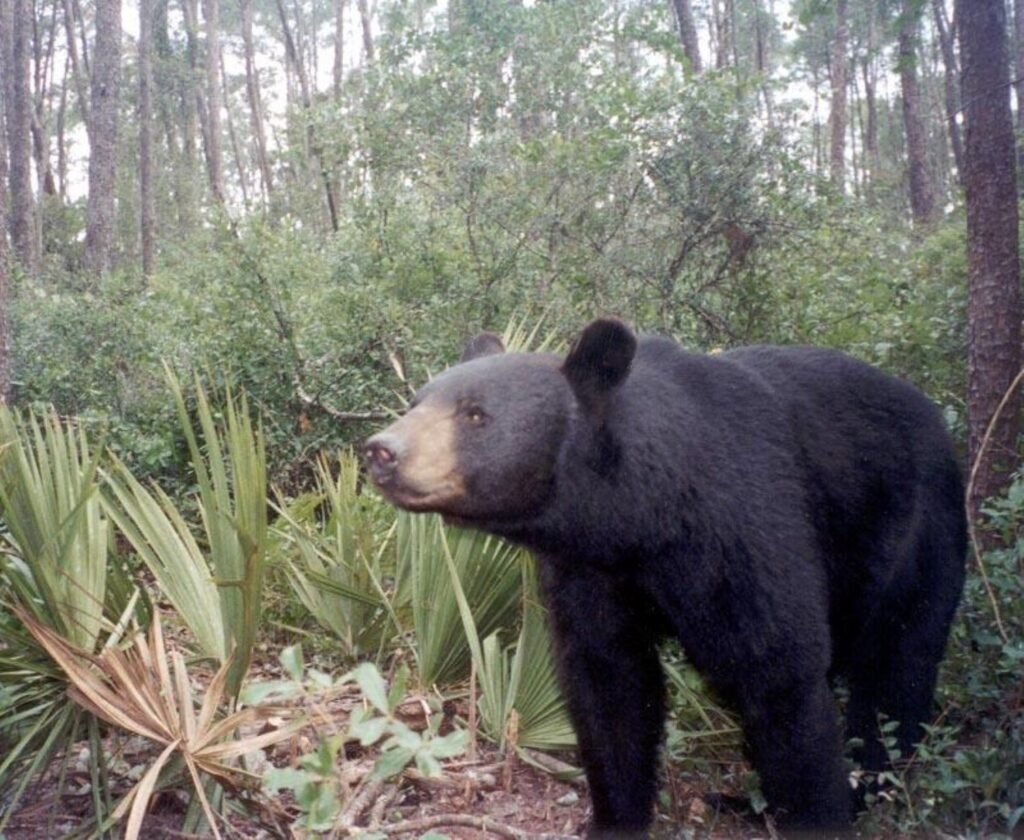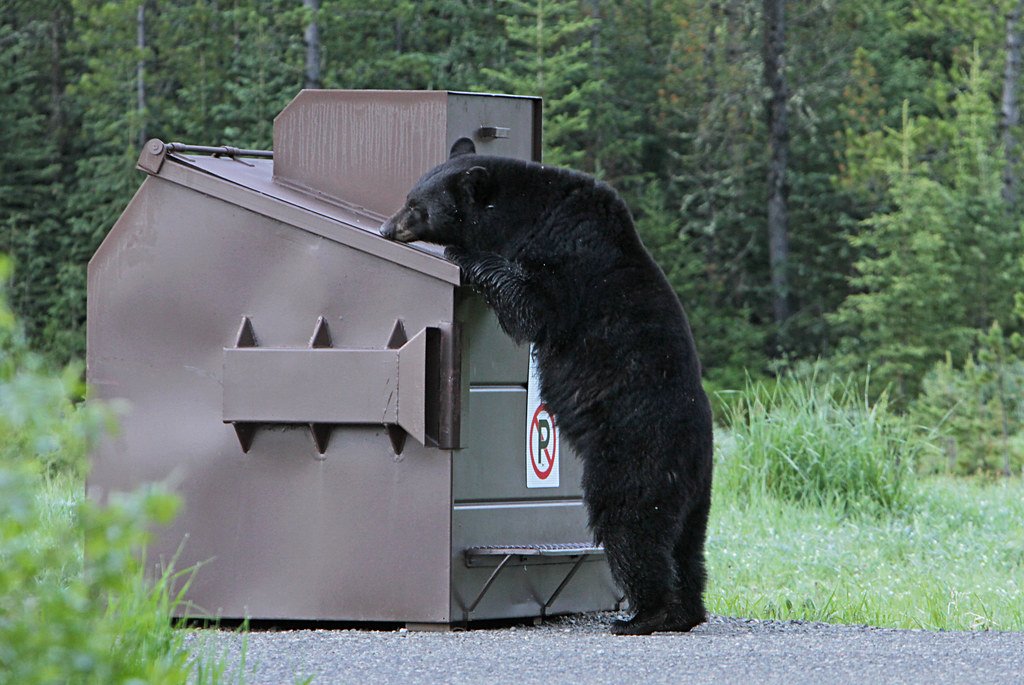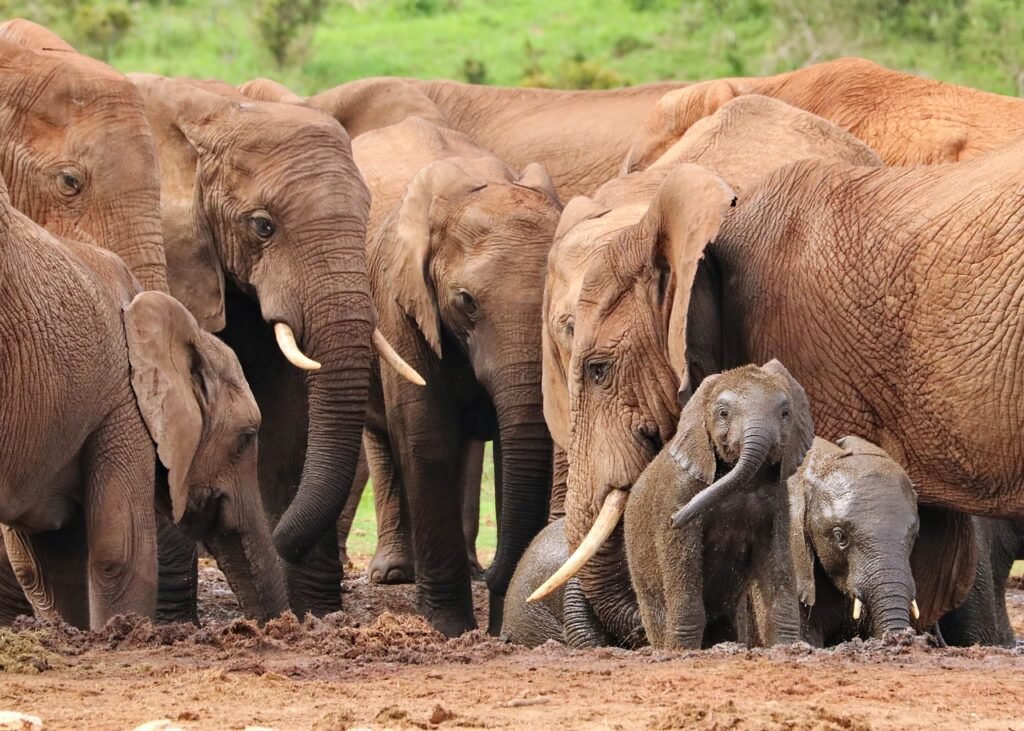Colorado’s black bears are behaving differently than ever before. They’re getting bolder, moving deeper into cities and neighborhoods, treating human spaces like their own backyard dining rooms. This shift isn’t just casual wandering anymore. Something bigger is happening.
The evidence is overwhelming. Reports of bear sightings and conflicts with people increased nearly 15% in 2024 from the previous five years, according to new data from Colorado Parks and Wildlife (CPW), with more than half of the conflicts stemming from trash. Colorado Parks and Wildlife received 5,022 reports of sightings and conflicts with bears in 2024 which is 14.8% higher than the previous 5-years.
What makes 2024 particularly striking is how brazen these bears have become. Bears were frequently reported entering buildings and houses. This isn’t typical bear behavior – it represents a fundamental shift in how these animals interact with human environments. Wildlife managers describe it as unprecedented boldness that has them genuinely concerned.
Record Breaking Numbers Tell the Story

Between Jan. 1 and Nov. 1, Colorado Parks and Wildlife received 4,644 bear reports, a 36% increase from the same period in 2023. This makes it the third-highest conflict year since 2019 and above the six-year average for bear conflicts and sightings. These aren’t just casual sightings anymore.
Of the 5,022 reports CPW received in 2024, 2,225 resulted in property damage to a shed, garage, home, vehicle, fence, etc. Think about that for a moment. Nearly half of all bear encounters now result in actual property damage. That’s a dramatic escalation from bears simply passing through neighborhoods.
The financial impact speaks volumes too. Colorado Parks and Wildlife awarded just under $1 million as part of its 2024 Human-Bear Conflict Reduction grant cycle to support individual communities’ efforts to reduce such conflicts. When a state dedicates that kind of money to a single wildlife issue, you know it’s serious.
Trash Becomes the Primary Magnet

2024 was no different with trash continuing to be the number one source of conflicts. This simple fact reveals how dramatically bear behavior has changed. Over 50% were linked to trash, 21% to livestock, chickens and beehives, and 18% to bird seed, pet food, barbeque grills, coolers and refrigerators.
Bears are essentially treating suburban neighborhoods like all-you-can-eat buffets. Bears try to consume about 20,000 calories per day as they prepare for hibernation. To put that in perspective, Twenty chicken sandwiches, 10 large orders of french fries, 10 soft drinks and 10 milkshakes is the approximate fast food order needed to total 20,000 calories. Human garbage provides an incredibly efficient path to those calories.
The bears have figured out that human neighborhoods offer predictable, high-calorie food sources without the energy expenditure of foraging in the wild. It’s a smart adaptation that’s creating enormous problems for both species.
Bears Breaking Into Homes Creates Dangerous Encounters

The most alarming development is bears actually entering occupied homes. A man in Lake City, Colorado, was attacked after a black bear and her three cubs entered his home. Officials said the attack occurred around 8:30 p.m. after the bears gained access to the house through a partially cracked sliding glass door.
The 74-year-old victim grabbed a chair from the kitchen and attempted to direct the adult bear back out the door when the bear charged him. The resident suffered clawing wounds to his head, neck, both arms, lower abdomen, shoulder and calf. “It’s certainly lucky we didn’t have a fatality, because it was close,” Colorado Parks and Wildlife Officer Lucas Martin said in a press release.
Officials said this is the first reported bear attack in Colorado this year compared with six reports in 2023. Still, the willingness to enter occupied homes represents a complete breakdown of natural bear behavior patterns.
Weather Patterns Drive Bears to Cities

This increase is believed to be due to a higher bear population and a shortage of natural food such as berries and acorns in some areas, caused by a cold and wet spring and a late frost in mid-June. Nature played a cruel trick on Colorado’s bears in 2024.
In 2024, Colorado experienced varying levels of human-bear conflicts, with some areas seeing increases while others saw declines. Natural food conditions were inconsistent across the state, influenced by localized droughts, late frosts, and variable precipitation. When bears can’t find their traditional food sources, they don’t just wait around to starve.
For example, with lower production of berries and acorns, more black bears will enter suburban areas searching for food such as human foods placed in garbage, grease on barbecue grills, and sugar water in hummingbird feeders. It’s a logical survival response that puts them directly in conflict with human communities.
Northwest Colorado Bears the Brunt

The state’s northwest region continues to be where the most conflict between bears and humans is reported. Last year, Parks and Wildlife received 1,914 reports in the region, a 55% increase from 2023. That’s not a gradual increase – that’s an explosion.
Across the entirety of these counties, Pitkin County had 804 reports in 2024, Garfield County had 454 and Eagle County had 180. Aspen, Glenwood Springs, and Vail are essentially living with bears as neighbors now. A Black bear looks up from stairs leading down to an apartment in downtown Aspen. A high number of bears are in the town of Aspen as they hunt for food in residents’ trash.
Reports in these three counties led to 18 bears being relocated from the region and 31 being euthanized. When wildlife managers have to relocate or euthanize nearly 50 bears from just three counties, the situation has clearly reached crisis levels.
Bears Learn from Their Mothers

When we have multiple sows with multiple cubs in town and conflict is occurring based on the ongoing availability of human food sources, it creates a very complex situation to mitigate. Unfortunately, cub bears that are taught these behaviors by their mother may result in generations of conflict between bears and people.
This creates a generational problem that won’t solve itself. Cubs learning that human neighborhoods provide easy meals will grow up expecting those resources. They’ll teach their own cubs the same patterns. Bears that have learned over the years, from foraging on these unnatural food sources, that it’s okay to be around humans and take more chances by entering houses/cabins.
Clearly, these bears were highly habituated and were willing to enter an occupied house with the residents sitting just feet away. When bears lose their natural fear of humans to this degree, the behavioral change becomes almost impossible to reverse.
Year Round Activity Replaces Hibernation

Food availability is a major driver of bears slowing their activity during the winter months. If food remains available due to people not securing their trash, bird seed, pet food, etc., bears will remain active year-round. Traditional hibernation patterns are breaking down.
Bears evolved to slow down and conserve energy during winter months when natural food becomes scarce. However, when dumpsters and bird feeders provide consistent calories throughout winter, bears simply adapt by staying active. Bears will be traveling up to 20 hours per day in search of food and chance encounters are likely to increase.
This year-round activity puts enormous stress on both bear populations and human communities. Bears burn more energy staying active, while neighborhoods face bear encounters during months when they traditionally didn’t worry about wildlife conflicts.
Vehicle Collisions Spike with Urban Expansion

The number of bears killed by vehicles increased again, from 10 last year to 12 this year. More bears in urban areas means more encounters with traffic. As bears start to pack on weight, and as they succumb to increased habitat loss due to development, they will venture increasingly into urban and suburban areas. In recent years, that’s included a bear wandering onto the University of Colorado Boulder campus, a bear sighting in the cities of Lone Tree and Aurora, the closure of a popular trail near Silverton, and one getting itself locked in a car in Evergreen.
These aren’t just random accidents. Bears are crossing roads and highways to reach human food sources they’ve learned to depend on. Urban sprawl pushes deeper into traditional bear habitat while human food sources pull bears toward dangerous road crossings.
Each vehicle collision represents a bear that had become dependent on human food sources to the point where it risked its life crossing busy roads to reach them.
Mother Bears Abandon Cubs

Additionally, in the past month area staff in the past month have observed several instances of sows abandoning or orphaning cubs. This behavior is generally associated with poor natural food conditions causing sows to prioritize their own survival over their offspring.
This represents perhaps the most disturbing behavioral change of all. Mother bears abandoning their cubs signals that food stress has reached critical levels. When survival becomes so difficult that maternal instincts fail, the entire ecosystem is under severe pressure.
Orphaned cubs have virtually no chance of surviving on their own, especially as they haven’t learned proper foraging behaviors. These abandoned cubs often become the problem bears of the future, seeking easy human food sources because they never learned to find natural alternatives.
Most Bear Reports Don’t End in Death

One concern CPW is aware of from the public is a reluctance to report bear activity over a belief it will lead to the bear being put down. Data shows that of the 5,022 reports wildlife managers received on bears in 2024, only 1.95% led to euthanization. The vast majority led to wildlife officers getting involved early enough to prevent the need to euthanize a bear.
The agency said of the 5,022 bear-related reports from 2024, just 1.95% led to euthanization. When reported early, wildlife officers can educate neighbors, try to haze the bear and, when applicable, can try to relocate it before its behavior rises to a dangerous level. Early intervention remains the most effective strategy for keeping both bears and humans safe.
However, wildlife officers stress relocation is not a fix-all solution as there is no way to unteach a bear once it learns that homes, garages or vehicles might contain food. Once bears associate human structures with food, that learned behavior proves nearly impossible to reverse.
Community Efforts Show Mixed Results

In the Colorado Springs area, we had a relatively mild bear conflict year. We started out with several conflicts due to drought but fortunately we received a lot of rain in mid-June which improved the availability of natural food sources. The city trash ordinance on the west side of town has helped reduce conflicts over the last few years.
Some communities have found success through coordinated efforts. Area 10 had a good spring and early summer with ample moisture, leading to a great mast crop and natural forage situation for our bears in late summer and fall. Human-bear conflicts in and around municipalities, including Steamboat Springs, were manageable and the number of conflicts were average to below average during the summer. The combination of mast crop production, other natural forage, and educational awareness may have led to a reduction in conflicts this year in Area 10.
These success stories demonstrate that solutions exist when communities commit to comprehensive approaches combining natural food availability with proper waste management and public education.
Simple Prevention Could Stop Most Conflicts

These conflicts could all easily be reduced if the public takes some simple steps around their homes and properties to prevent bears from accessing them. The solution sounds almost too simple, yet it would address the majority of conflicts.
Keep garbage in a well-secured location. Only put out garbage on the morning of pickup. Clean garbage cans regularly to keep them free of food odors: ammonia is effective. Use a bear-resistant trash can or dumpster. Keep garage doors closed. These basic steps would eliminate most of the attractants drawing bears into neighborhoods.
This is mainly a result of poor trash management and unlocked and/or opened doors and windows. We are thankful that some residents are being responsible and have taken action to live with wildlife, but it ultimately takes a community effort. We continue to ask residents and guests to remove attractants, secure their homes, camp responsibly, and remember to lock their vehicles.
The frustrating reality for wildlife managers is that most conflicts result from preventable human behaviors. When entire neighborhoods commit to bear-aware practices, conflicts drop dramatically. When only some residents participate, bears continue finding easy food sources and conflicts persist.
Conclusion

Colorado’s black bears have crossed a behavioral threshold that changes everything. They’re no longer wild animals that occasionally wander into human spaces – they’ve become urban-adapted creatures that view human neighborhoods as part of their territory. “This year, I think both from an urban-suburban impact and a livestock-bear depredation impact, bears are a little bit off the charts as far as damage.”
The 2024 numbers represent more than just statistics. They reveal a fundamental shift in how one of Colorado’s largest predators interacts with human communities. This is a tragic thing that has happened, and it happened because bears continue to have access to human food sources. We’ve talked about this for decades – access to human food sources, including trash and bird feeders, is what leads to escalating and sometimes dangerous behavior from black bears.
What started as occasional conflicts has evolved into a crisis requiring million-dollar intervention programs and fundamental changes in how communities manage waste and food sources. The bears have adapted to city life faster than cities have adapted to hosting bears. What do you think – can Colorado communities change their habits quickly enough to prevent this situation from getting worse?

Hi, I’m Andrew, and I come from India. Experienced content specialist with a passion for writing. My forte includes health and wellness, Travel, Animals, and Nature. A nature nomad, I am obsessed with mountains and love high-altitude trekking. I have been on several Himalayan treks in India including the Everest Base Camp in Nepal, a profound experience.




